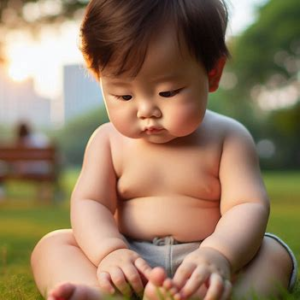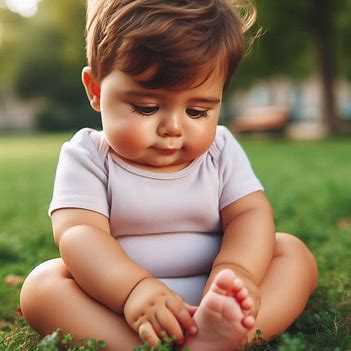Why Are My Toddler’s Feet Peeling?
As a parent, seeing any unusual changes in your toddler’s skin can be scary. One common problem many parents face is peeling skin on their toddler’s feet. If you’ve ever wondered, “Why are my toddler’s feet peeling?”, you’re not alone. Let’s dive into this topic to help ease your worries and keep your little one’s tootsies healthy and happy.
Quick Answer: Toddlers’ feet may peel due to dry skin, fungal infections like athlete’s foot, skin conditions such as eczema, viral infections like hand, foot, and mouth disease, or contact with irritating substances. Most cases are harmless and can be treated at home, but some may need a doctor’s care.
My Personal Experience with Peeling Feet
Before we jump into the details, let me share a quick story. Last summer, my 2-year-old son Jake started showing up with flaky, peeling feet after his daily backyard adventures. At first, I freaked out a little (as we parents often do!). But after some research and a chat with our pediatrician, I learned it was just a case of dry skin from all that barefoot playtime. A little extra care and moisturizing, and his feet were back to normal in no time. This experience taught me a lot about toddlers’ skin and inspired me to share what I learned with other parents.
Common Causes of Peeling Feet in Toddlers

Let’s break down the main reasons why your toddler’s feet might be peeling:
1. Dry Skin
Toddlers have super soft, sensitive skin that can dry out easily. This can happen from:
- Too much time in water (like long baths or pool days)
- Harsh soaps or bubble baths
- Dry air, especially in winter
- Not enough moisturizing
2. Athlete’s Foot
Yes, even toddlers can get athlete’s foot! This fungal infection loves warm, damp places (like sweaty feet in shoes). Signs include:
- Peeling skin between toes or on the soles
- Itchy, red skin
- Sometimes a slight burning feeling
3. Eczema
Eczema is a common skin condition that can show up anywhere on the body, including tiny feet. Look for:
- Red, itchy patches
- Dry, scaly skin
- Possible small bumps that might leak fluid
4. Hand, Foot, and Mouth Disease
This viral illness is pretty common in young kids. Along with peeling feet, you might notice:
- Fever
- Sores in the mouth
- A rash on hands and feet
5. Contact Dermatitis
Sometimes, toddlers’ feet peel because of a reaction to something touching their skin. This could be:
- New shoes or socks
- Laundry detergent
- Grass or other outdoor elements
When Should I Worry?
Most of the time, peeling feet aren’t a big deal. But sometimes, they can be a sign of something that needs a doctor’s attention. Call your pediatrician if you notice:
- Fever along with peeling feet
- Signs of infection (like pus or very red, swollen skin)
- Peeling that doesn’t get better with home care
- Your child seems to be in pain or won’t walk normally
Treating Peeling Feet at Home
In many cases, you can take care of peeling feet right at home. Here are some tips:
1. Moisturize, Moisturize, Moisturize!
This is the number one way to help dry, peeling skin. Use a gentle, unscented lotion made for kids. Apply it:
- Right after bath time (when skin is still a bit damp)
- Before bedtime
- Any time feet look or feel dry
2. Soak and Seal
For extra dry feet, try this routine:
- Soak feet in warm (not hot) water for about 10 minutes
- Pat dry gently
- Apply a thick moisturizer or petroleum jelly
- Put on clean, cotton socks to lock in the moisture
3. Choose the Right Footwear
Shoes and socks can make a big difference:
- Pick shoes made of breathable materials like canvas or leather
- Make sure shoes fit well – not too tight or too loose
- Use cotton socks to help absorb sweat
- Change socks if feet get sweaty during the day
4. Gentle Cleaning
Bath time is important, but too much can dry out skin:
- Use lukewarm water, not hot
- Pick a mild, unscented soap
- Don’t scrub feet – gentle washing is enough
- Pat feet dry instead of rubbing
Preventing Peeling Feet
An ounce of prevention is worth a pound of cure, right? Here are some ways to stop peeling before it starts:
- Stay hydrated: Make sure your toddler drinks plenty of water to keep skin healthy from the inside out
- Limit bath time: Too much time in water can dry out skin. Aim for short, 10-minute baths
- Use a humidifier: This can help in dry weather or if you use air conditioning a lot
- Check products: Look for gentle, fragrance-free options in soaps, lotions, and laundry detergents
- Protect feet outdoors: Use swim shoes at the pool and sandals or shoes for hot pavement
When to See a Doctor
While most cases of peeling feet in toddlers can be handled at home, sometimes you need a professional opinion. It’s time to call the doctor if:
- Home treatments don’t seem to be working after a week or two
- The peeling is severe or spreading to other parts of the body
- You notice signs of infection like increased redness, swelling, or pus
- Your child has a fever or seems unwell
- The peeling is accompanied by other symptoms you can’t explain
Remember, your pediatrician is there to help. Don’t hesitate to reach out if you’re worried or unsure about your toddler’s foot health.
The Emotional Side of Skin Issues
It’s worth mentioning that skin problems, even minor ones like peeling feet, can sometimes affect a child’s emotions. Your toddler might feel:
- Uncomfortable or itchy
- Embarrassed if the peeling is visible
- Frustrated if they can’t play or walk normally
Be sure to offer extra comfort and reassurance. Explain in simple terms what’s happening and how you’re helping their feet get better. This can go a long way in keeping your little one calm and cooperative during treatment.
Fun Foot Care for Toddlers
Caring for peeling feet doesn’t have to be boring! Here are some ways to make foot care fun for your toddler:
- Lotion massage: Turn moisturizing into a fun, tickly game
- Colorful socks: Let your child pick out fun, soft socks to wear
- Footprint art: Use safe, washable paint to make footprint pictures (and check for peeling at the same time)
- Story time: Read books about feet or body care during treatment time
Wrapping Up: Happy Feet, Happy Toddler
Dealing with peeling feet in toddlers can be a bit scary at first, but now you’re armed with knowledge and tips to handle it like a pro. Remember, most cases are harmless and easy to treat at home. With a little extra care and attention, your toddler’s feet will be back to their soft, smooth selves in no time.
Keep an eye on those little piggies, use gentle products, and don’t be afraid to call your doctor if you’re unsure. Every child is different, so what works for one might not work for another. Trust your instincts and keep trying until you find what works best for your toddler.
Here’s to happy, healthy feet and all the wonderful adventures they’ll carry your little one through!
Next Steps
- Check your toddler’s feet regularly for any signs of peeling or irritation
- Stock up on gentle, child-friendly moisturizers
- Review your bath time routine and products
- If peeling persists or worsens, schedule a check-up with your pediatrician
Remember, you’ve got this, parents! Healthy feet are just a few steps away.

Jessica Winter is a passionate parenting blogger with two years of experience guiding new and seasoned parents through the joys and challenges of raising babies. Her insightful posts blend personal anecdotes with expert advice to offer a warm and practical perspective on modern parenting.

